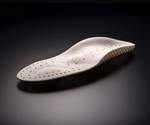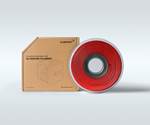DSM and Nedcam to Develop New Applications for Large-Size 3D Printing
Collaborating with DSM on material and 3D printing technology, Nedcam will offer commercial 3D printing production services to manufacturers looking for large-size applications, using DSM’s optimized pellet materials.
DSM and 3D printing provider Nedcam announced their collaboration to improve access to scalable Fused Granulate Fabrication (FGF) 3D printing. Nedcam will offer FGF 3D printing using DSM materials and the two companies will explore new applications in tooling, large-size and circular end-use parts.
Nedcam, providing total solutions in shaping technology, ranging from engineering, material selection and tooling to special transport, recently added a CEAD AM Flexbot robotic 3D printer to their site in Heerenveen, Netherlands. Collaborating with DSM on material and 3D printing technology, Nedcam will offer commercial 3D printing production services to manufacturers looking for large-size applications, using DSM’s optimized pellet materials.
The two companies will also collaborate to develop and test new materials, processes and applications and will bring new solutions to markets requiring large-size 3D printing, such as marine, renewable energy, construction and infrastructure. They are currently collaborating closely with Royal HaskoningDHV for slicing of structural elements.
“At DSM, we believe that FGF is a critical technology to address the need for manufacturing structural and large-size components using highly filled polymers at competitive production lead times,” said Pieter Leen, application development specialist additive manufacturing at DSM. “Nedcam provides an important link between product development and market demand and their printing activities will help accelerate the adoption of additive manufacturing.”
Nedcam currently produces plugs and molds from various materials, including glass fiber reinforced composites and steel, often for single or limited use, resulting in tons of waste every year. FGF production using recyclable materials offers a route to a more sustainable process.
“We absolutely want to reduce the waste in our production process and go circular,” said Erwin van Maaren, co-founder and commercial director at Nedcam. “By combining DSM’s 3D printing and thermoplastics expertise with our production knowledge and production facilities, we want take the necessary steps toward a sustainable and fully circular model production process.”

CEAD AM Flexbot 3D printer.
Related Content
-
Polymer Science for Those Who Work With Plastic — Part 1: The Repeat Unit
What are the basic building blocks of plastics and how do they affect the processing of that material and its potential applications in the real world? Meet the repeat unit.
-
The Fantasy and Reality of Raw Material Shelf Life: Part 2
For the vast majority of thermoplastics, the stability of the materials can be stated in years, not months. But there are exceptions where shelf life can be a serious issue.
-
Polymer Science for Those Who Work With Plastics: Molecular Weight — What It Is and Why It Matters
Molecular weight might seem like an abstract concept, but it plays a crucial role in determining the behavior of plastics during processing and in their final applications.






